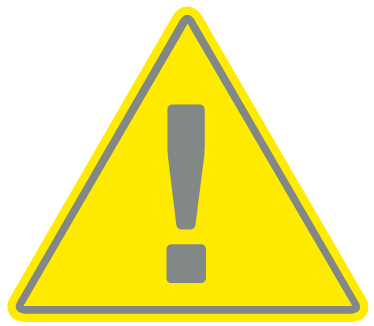The inverter's internal protective functions
The following protective functions are implemented in the inverter.
- Insulation monitoring
- Residual current monitoring
WARNING

Issues with the inverter's protective function
Some protective functions, such as insulation monitoring and residual current monitoring, may be affected by high capacities of the PV generator to earth.
These protective functions have been proven for a total capacity of the PV generator and battery to earth of 10µF. If the PV generator has a higher capacity to earth, there are no assurances that these protective measures will work properly.
WARNING

Electric shock or risk of fire originating from connected device!
If the protective functions output an error, there is a potential risk of fire or electric shock originating from the connected devices. The error must therefore be rectified immediately and this may only be done by qualified maintenance staff.
The protective functions are not affected by external blocking diodes.
Please check the setup specifications and standards valid locally to establish whether additional protective measures are required on site.
Insulation monitoring
Before connecting to the grid, the inverter checks the insulation of the entire PV generator and battery to earth.
If this resistance falls below the limit of 100 kΩ, this is displayed as an insulation fault.
- The inverter reports an “insulation resistance” event.
For as long as the error persists and the insulation resistance is too low, the inverter does not connect to the grid.
This protective function cannot be configured or deactivated.
Residual current monitoring
The inverter monitors the leakage current of the PV generator, including the battery, as soon as it is connected to the grid.
The internal residual current monitoring is AC/DC sensitive and corresponds to a type B RCD.
Residual current monitoring fulfils the following protective functions.
Fire prevention
If the residual current exceeds a value of 300mA, the inverter shuts down within 300ms.
- The inverter reports an “insulation monitoring” or “residual current too high” event.
Before switching on again, the inverter checks the insulation to earth. If the insulation monitoring also detects an error or the insulation monitoring event occurs on a frequent basis, this may indicate that the insulation is damaged. The damage must be repaired immediately by qualified maintenance staff.
This protective function cannot be configured or deactivated.
Protection from electric shock
An electric shock usually leads to an erratic increase in residual current. The inverter detects erratic residual currents and, depending on the size of the increase, shuts down within the following times:
Sudden change in residual or earth fault current [mA] | Maximum response time [s] |
|---|---|
30 | 0.3 |
60 | 0.15 |
90 | 0.04 |
- The inverter reports an “insulation monitoring” or “residual current too high” event.
Before switching on again, the inverter checks the insulation to earth. If the insulation monitoring also detects an error or a residual current too high event occurs on a frequent basis, this may indicate that the insulation is damaged. The damage must be repaired immediately by qualified maintenance staff.
This protective function cannot be adjusted or deactivated.
Monitoring the DC element of the leakage current
If the DC element of the leakage current is too large, it may impair the function of upstream type A RCDs.
If the Compatibility of RCD type A function is active (default setting), the inverter also monitors the DC leakage current. If the DC leakage current reaches a value that may jeopardise the function of an upstream type A RCD, the inverter shuts down.
- The inverter reports a “DC residual current” event.
Before switching on again, the inverter checks the insulation to earth. If the insulation monitoring also detects an error, this may indicate that the insulation is damaged. The damage must be repaired immediately by qualified maintenance staff.
However, depending on the PV generator used, a high DC leakage current may be totally normal. In this case, once the system has been checked by qualified staff, this monitoring can be deactivated once it has been ensured that all upstream RCDs are type B RCDs.